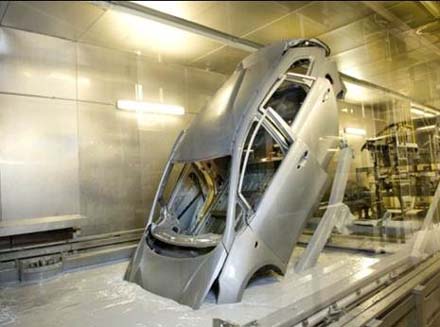for producing galvanised auto body material
 Steel has been used to make automobiles since the early 1900s but corrosion resistance features became standard in vehicles beginning in the early 1980s when Japanese cars gained entrance to the U.S. market.
Steel has been used to make automobiles since the early 1900s but corrosion resistance features became standard in vehicles beginning in the early 1980s when Japanese cars gained entrance to the U.S. market.
North American-made vehicles were having “real rust problems” that couldn’t be fought merely with heavier, and more expensive, paint. By the mid-1980s, one really had to galvanize the whole car if wanted to issue warranties.
By 1987, what became standard was a 10-year perforation and five-year cosmetic warranty from all the North American, European and Japanese automakers for vehicles sold in the North American market. That really put the burden on the steelmakers to ask, how are we going to galvanize cars? The first process adopted was electrogalvanizing(EG). So large-volume electroplating lines were built and they processed 20 million tons of steel per year through early 1990s. However, the industry found this process expensive because of the amount of electricity required. At the time, EG was the only process approved for automotive quality. Everyone saw the Holy Grail was to hot dip galvanize automotive steels. It was already done for building panels and appliances. Getting that to be automotive quality was the key, and that happened by the mid-1990s.
The annual consumption of zinc for autobodies today is roughly 120,000 metric tonnes. There is almost no galvanized steel on Chinese-made vehicles except for exports from China by Volkswagen AG, General Motors Co. and others. That’s 20 million cars in China not using galvanized steel.
India, is a huge and growing market for passenger vehicles, but galvanized steel is not used in auto manufacturing. India’s emerging market economies could bring 600,000 metric tons of zinc consumption per year. The need is to formulate standards for corrosion protection. Hindustan Zinc is India’s only and world’s leading Zinc-Lead-Silver Producer..
Article by- Pavan Kaushik, Head – Corporate Communication, Hindustan Zinc